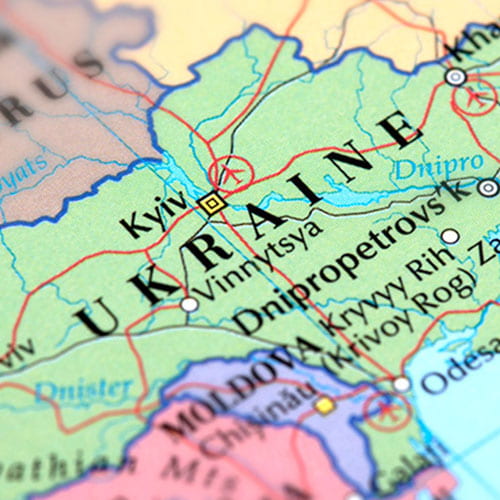By Joe Barnes
Bonner Means Baker Fellow
The war in Ukraine is many things: an egregious act of Russian aggression, a tragedy for the Ukrainian people, an immediate crisis in Russia’s relationship to the West and, indeed, much of the world. But the war also marks a decisive moment for global politics. This is most obvious in the case of European security architecture, where the Ukraine war has raised profound issues about the future of NATO and the EU. But the war also has important ramifications in terms of the Far East, where China is taking an ever more assertive stance on what Beijing considers its core regional interests. These broader issues are of particular and acute concern for the United States, which has deep and abiding strategic commitments in both Europe and the Far East.
NATO and the EU
One consequence of the war in Ukraine is clear: a stronger, more unified NATO. Far from creating major rifts in the transatlantic alliance, Russia’s invasion has reinvigorated the organization in a way not seen since the end of the Cold War. In general, NATO members have presented a common front against Russian aggression. Led by the United States, they have shuttled substantial amounts of critical weaponry and munitions to Ukraine. Even Germany, a perennial disappointment when it comes to NATO military expenditures, has announced a major increase in defense outlays. Two traditionally neutral counties, Finland and Sweden, are seeking NATO membership.
The war in Ukraine may have alerted NATO to the very real threat posed by Russia. But paradoxically, the war has also revealed the Russian military to be far less fearsome than most observers believed. Moreover, the severe human and material losses inflicted by Ukraine on Russian forces mean it may be years before Moscow makes its military whole again. Russian military recovery will also be slowed by draconian economic sanctions imposed on the country’s economy by the U.S., the EU and others.
The Europeans have long been capable in theory of defending themselves against Russian conventional attack. Collectively, European NATO members have a substantially higher population than Russia. They dwarf Russia in economic terms. The war in Ukraine could be a spur for the Europeans to bear a greater burden for their own defense. It could also create an opportunity for the United States to focus its strategy elsewhere – notably the Far East, where China poses a threat to U.S. strategic dominance. But whether this strategic realignment will occur is uncertain. The Europeans, over the course of decades, have grown used to free-riding on U.S. security guarantees. In pursuit of “strategic autonomy,” the EU has made a few minor steps toward developing a military arm; how such a force, if dramatically increased, would work with NATO is a complicated question. The United States, for its part, surely enjoys the influence Washington wields through its leadership role in NATO. Any reduction of U.S. commitment to Europe now, in the midst of a savage, ongoing war between Ukraine and Russia, would of course be premature. But the time for strategic thinking – as opposed to reactive policies, however necessary they might be – is coming.
The Far East
The Ukraine war has refocused attention on Taiwan and, specifically, the risk of an invasion by China. Ukraine’s tough resistance to Russia’s attack is surely prompting the Chinese military reassess contingency plans for an assault on Taiwan. The Chinese government is also no doubt following the course of economic sanctions against Russia and exploring mechanisms that Beijing itself could use to undermine sanctions during a crisis over Taiwan.
U.S. policy toward China has been hardening for years. The U.S. still formally maintains a policy of “strategic ambiguity” in regard to Taiwan – a stance that supports Taiwan but falls short of an explicit security guarantee. But the policy is fraying. President Joe Biden has on several occasions suggested that the U.S. would indeed come to the island’s defense should China invade. Strategic ambiguity has worked well for decades. But risks have increased as China pursues a major defense build-up aimed at reducing the United States’ military edge in the Far East; the U.S. could face an irreversible fait accompli should China launch an invasion. The changing balance of power in the Far East has prompted calls for even higher U.S. defense expenditures and greater political engagement in the region. Such calls for reorientation are not new; indeed, President Obama famously declared a “pivot to Asia” in 2012. But chaos in the Middle East intervened, diverting attention from the Far East. Today, something similar could be happening, as the war in Ukraine (understandably) captures the attention of U.S. foreign policymakers. Biden’s recent trip to the Far East was surely meant, at least in part, to reassure regional allies of our continuing support. But photo-ops and a few vague initiatives do not a strategy make.
Conclusion
Given the scope of our commitments – not just in Europe and the Far East, but in the Middle East as well – the U.S. needs to undertake a ruthless assessment of how to match resources to those commitments. An “all of the above” approach may be comfortable for a security establishment wishing to protect its various legacy policies. But it risks dangerous strategic overreach.
